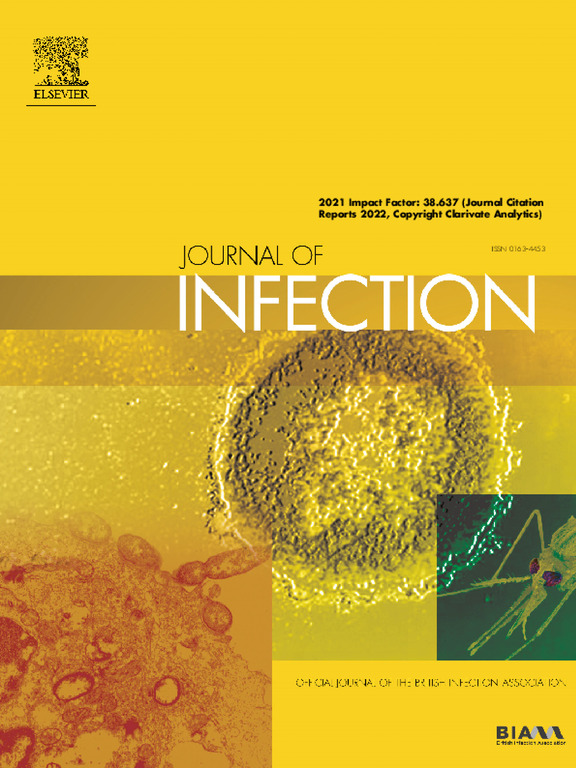Heterologous COVID-19 vaccine schedule with protein-based prime (NVX-CoV2373) and mRNA boost (BNT162b2) induces strong humoral responses: Results from COV-BOOST trial
IF 11.9
1区 医学
Q1 INFECTIOUS DISEASES
引用次数: 0
Abstract
Background
Heterologous schedules of booster vaccines for COVID-19 following initial doses of mRNA or adenoviral vector vaccines have been shown to be safe and immunogenic. There are few data on booster doses following initial doses of protein nanoparticle vaccines.
Methods
Participants of the phase 3 clinical trial of the COVID-19 vaccine NVX-CoV2373 (EudraCT 2020–004123-16) enroled between September 28 and November 28, 2020, who received 2 doses of NVX-CoV2373 administered 21 days apart were invited to receive a third dose booster vaccine of BNT162b2 (wild type mRNA vaccine) as a sub-study of the COV-BOOST clinical trial, and were followed up for assessment of safety, reactogenicity and immunogenicity to day 242 post-booster.
Results
The BNT162b2 booster following two doses of NVX-COV2373 was well-tolerated. Most adverse events were mild to moderate, with no serious vaccine-related adverse events reported. Immunogenicity analysis showed a significant increase in spike IgG titres and T-cell responses post-third dose booster. Specifically, IgG levels peaked at day 14 with a geometric mean concentration (GMC) of 216,255 ELISA laboratory units (ELU)/mL (95% CI 191,083–244,743). The geometric mean fold increase from baseline to day 28 post-boost was 168.6 (95% CI 117.5–241.8). Spike IgG titres were sustained above baseline levels at day 242 with a GMC of 58,686 ELU/mL (95% CI 48,954–74,652), with significant decay between days 28 and 84 (geometric mean ratio 0.58, 95% CI 0.53–0.63). T-cell responses also demonstrated enhancement post-booster, with a geometric mean fold increase of 5.1 (95% CI 2.9–9.0) at day 14 in fresh samples and 3.0 (95% CI 1.8–4.9) in frozen samples as measured by ELISpot. In an exploratory analysis, participants who received BNT162b2 after two doses of NVX-COV2373 exhibited higher anti-spike IgG at Day 28 than those who received homologous three doses of BNT162b2, with a GMR of 5.02 (95% CI: 3.17–7.94). This trend remained consistent across all time points, indicating a similar decay rate between the two schedules.
Conclusions
A BNT162b2 third dose booster dose in individuals primed with two doses of NVX-COV2373 is safe and induces strong and durable immunogenic responses, higher than seen in other comparable studies. These findings support the use and investigation of heterologous booster strategies and early investigation of heterologous vaccine technology schedules should be a priority in the development of vaccines against new pathogens.
COV-BOOST试验结果:蛋白基引物(NVX-CoV2373)和mRNA增强(BNT162b2)的异源COVID-19疫苗方案诱导强体液应答
背景:在mRNA或腺病毒载体疫苗初始剂量后,异源计划的COVID-19加强疫苗已被证明是安全和免疫原性的。关于蛋白质纳米颗粒疫苗初始剂量后加强剂量的数据很少。方法:2020年9月28日至11月28日招募的COVID-19疫苗NVX-CoV2373 (EudraCT 2020-004123-16) 3期临床试验参与者,接受了2剂NVX-CoV2373,间隔21天接种,作为COV-BOOST临床试验的子研究,邀请他们接受第三剂BNT162b2(野生型mRNA疫苗)加强疫苗,并随访评估安全性、反应原性和免疫原性,直至加强后242天。结果:两剂NVX-COV2373后BNT162b2增强剂耐受性良好。大多数不良事件为轻度至中度,未报告严重的疫苗相关不良事件。免疫原性分析显示,第三剂增强剂后刺突IgG滴度和t细胞应答显著增加。具体而言,IgG水平在第14天达到峰值,几何平均浓度(GMC)为216,255 ELISA实验室单位(ELU)/mL (95% CI 191,083-244,743)。从基线到增强后第28天的几何平均折叠增加为168.6 (95% CI 117.5-241.8)。钉状IgG滴度在第242天维持在基线水平以上,GMC为58,686 ELU/mL (95% CI 48,954-74,652),在第28天至第84天显著下降(几何平均比0.58,95% CI 0.53-0.63)。通过ELISpot检测,在第14天,新鲜样品的t细胞反应也表现出增强,几何平均增加5.1倍(95% CI 2.9-9.0),冷冻样品的几何平均增加3.0倍(95% CI 1.8-4.9)。在一项探索性分析中,在接受两剂NVX-COV2373治疗后接受BNT162b2治疗的参与者在第28天表现出比接受三剂BNT162b2治疗的参与者更高的抗spike IgG, GMR为5.02 (95% CI: 3.17-7.94)。这一趋势在所有时间点上保持一致,表明两个时间表之间的衰减率相似。结论:在两剂NVX-COV2373的个体中,BNT162b2第三剂加强剂是安全的,并且诱导了强烈和持久的免疫原性反应,高于其他可比研究。这些发现支持异种加强策略的使用和研究,并且异种疫苗技术的早期研究时间表应该是开发针对新病原体的疫苗的优先事项。
本文章由计算机程序翻译,如有差异,请以英文原文为准。
求助全文
约1分钟内获得全文
求助全文
来源期刊

Journal of Infection
医学-传染病学
CiteScore
45.90
自引率
3.20%
发文量
475
审稿时长
16 days
期刊介绍:
The Journal of Infection publishes original papers on all aspects of infection - clinical, microbiological and epidemiological. The Journal seeks to bring together knowledge from all specialties involved in infection research and clinical practice, and present the best work in the ever-changing field of infection.
Each issue brings you Editorials that describe current or controversial topics of interest, high quality Reviews to keep you in touch with the latest developments in specific fields of interest, an Epidemiology section reporting studies in the hospital and the general community, and a lively correspondence section.
 求助内容:
求助内容: 应助结果提醒方式:
应助结果提醒方式:


